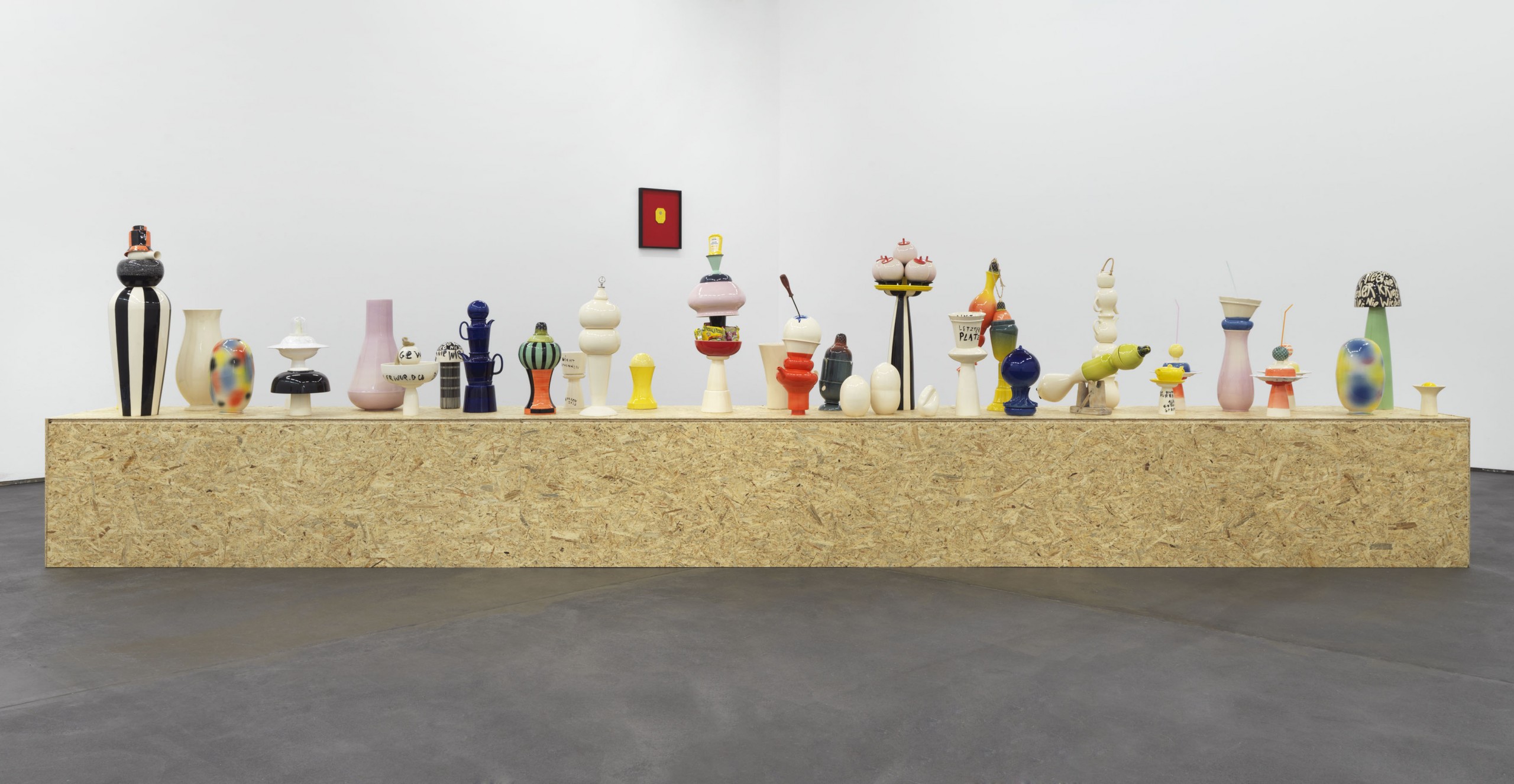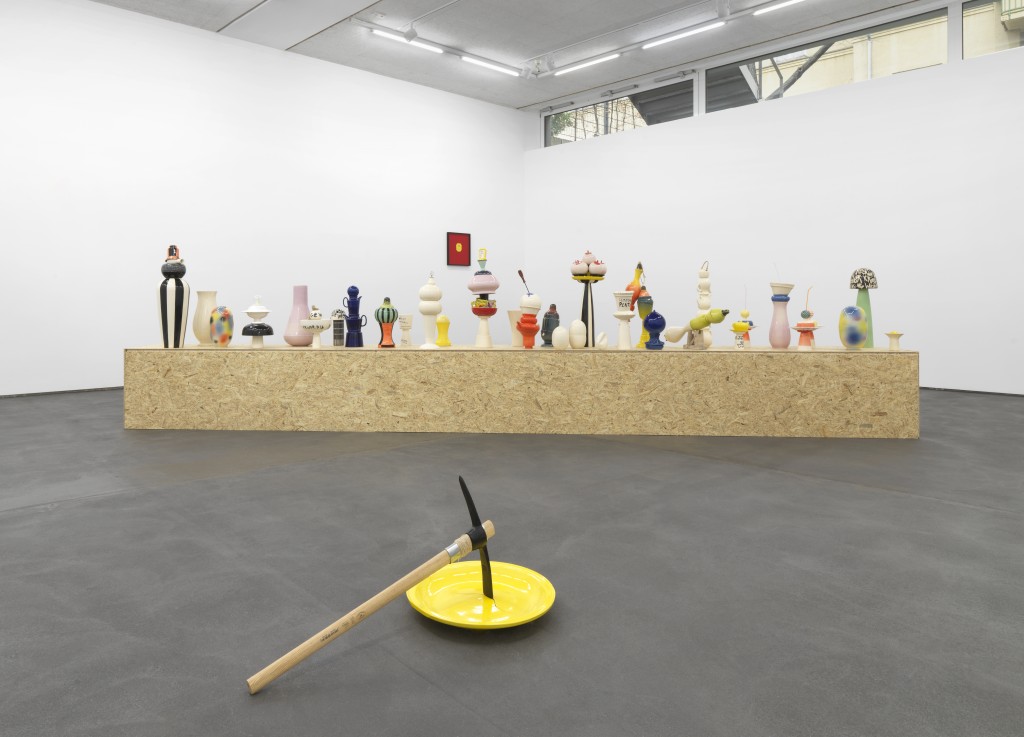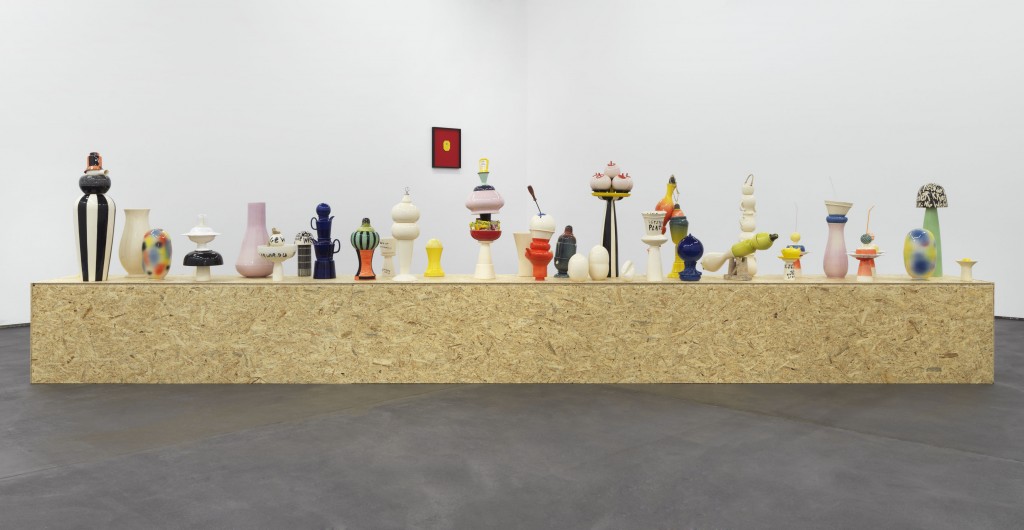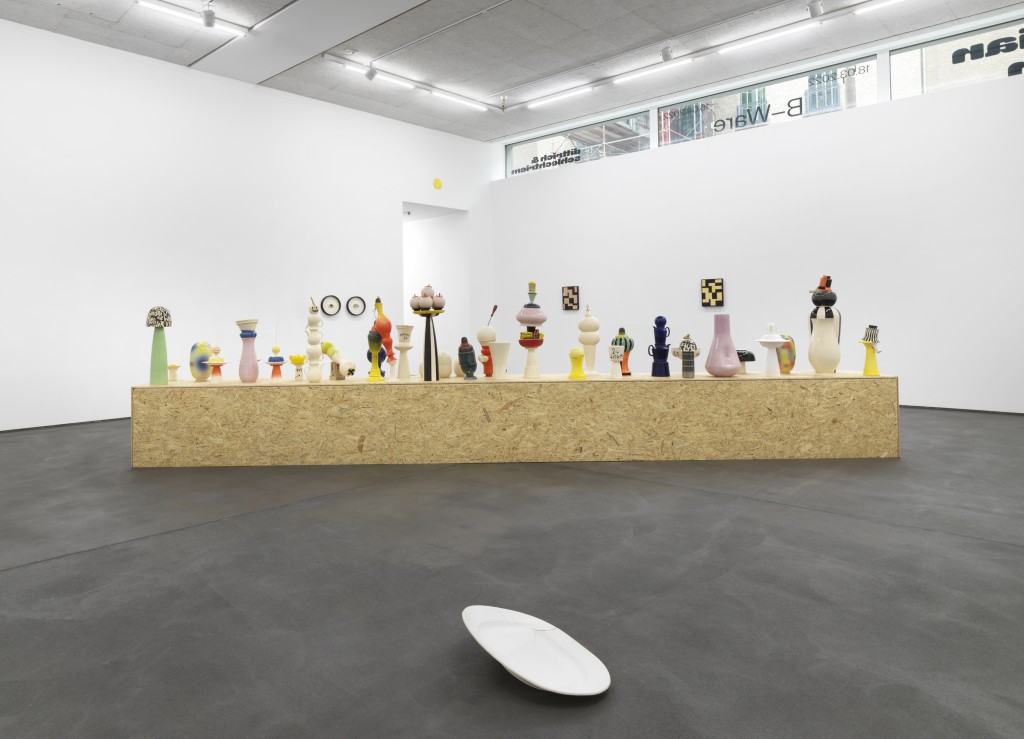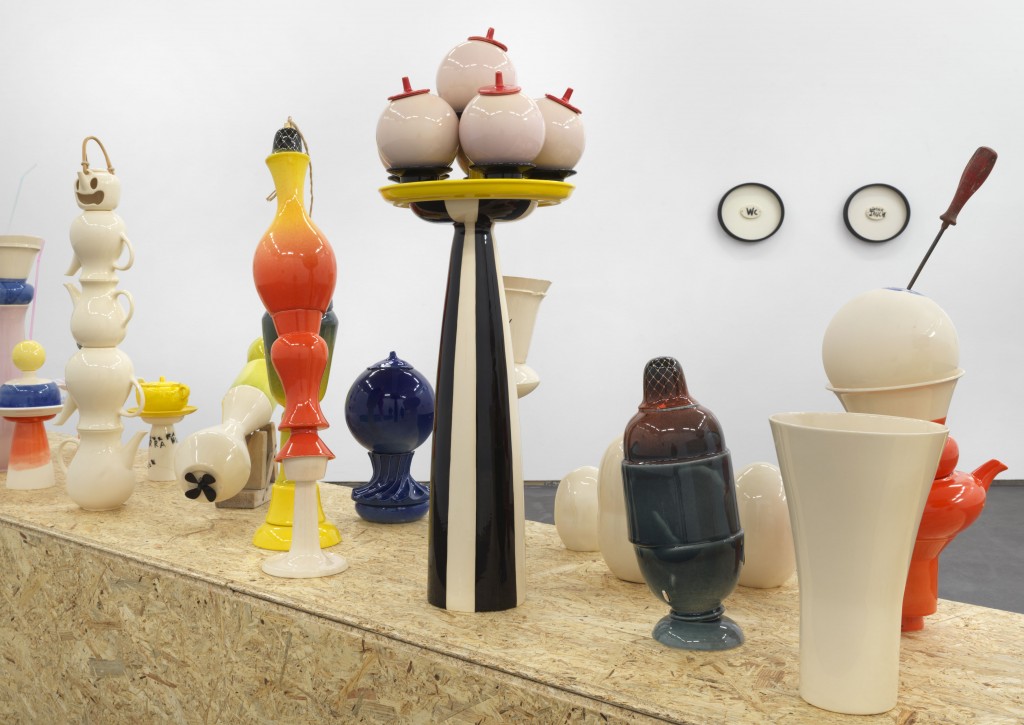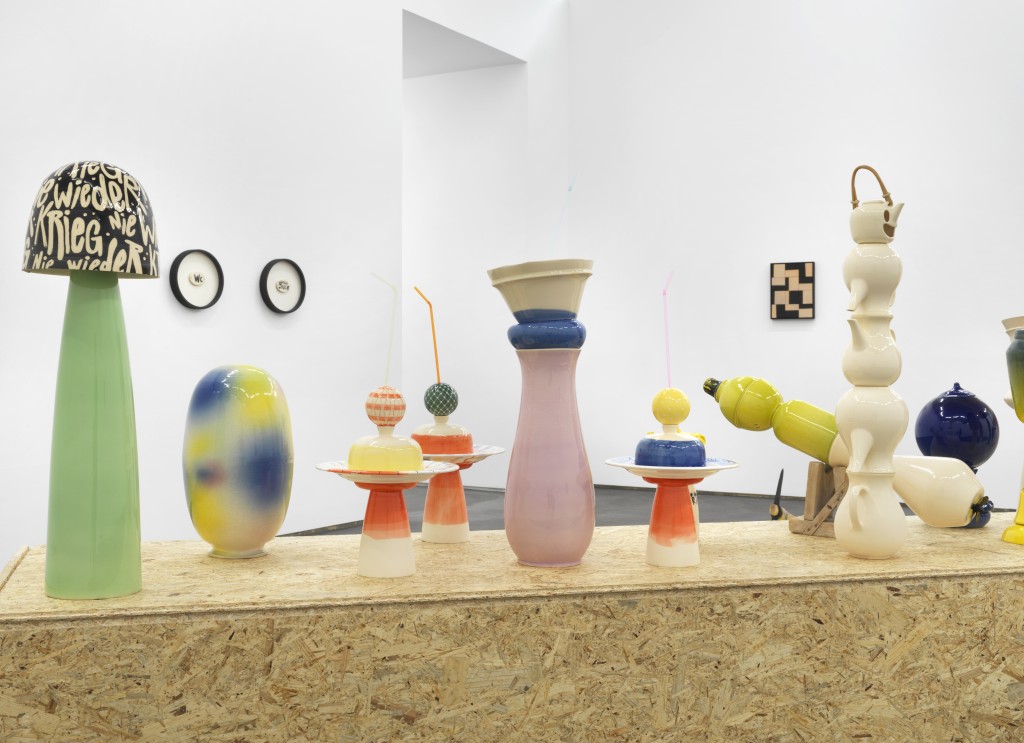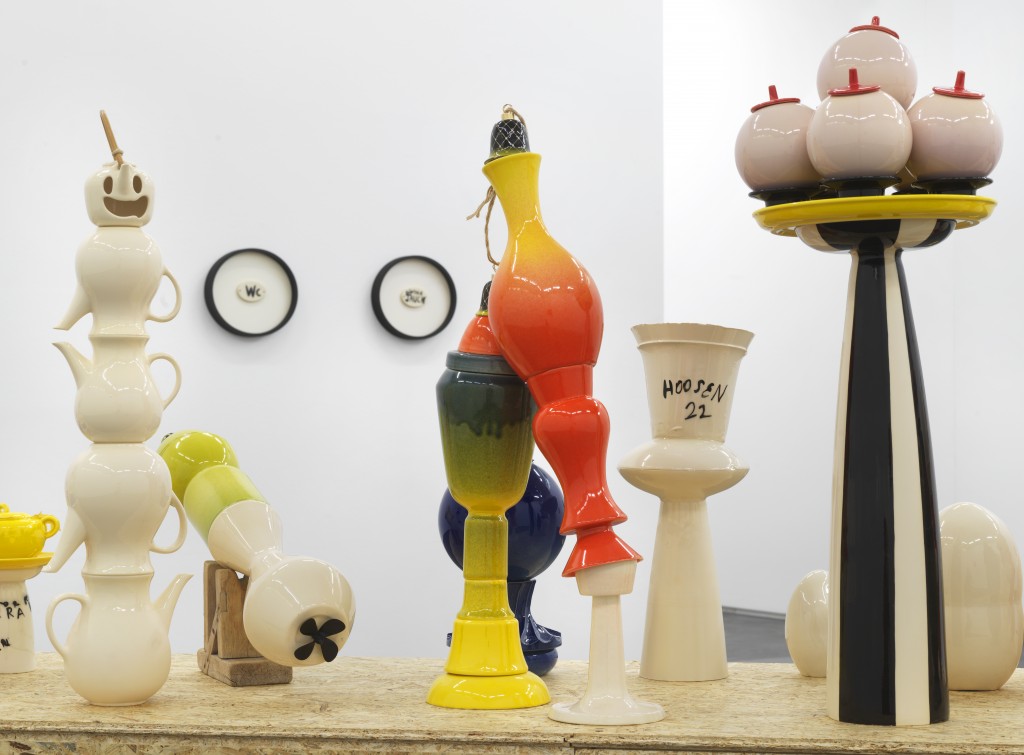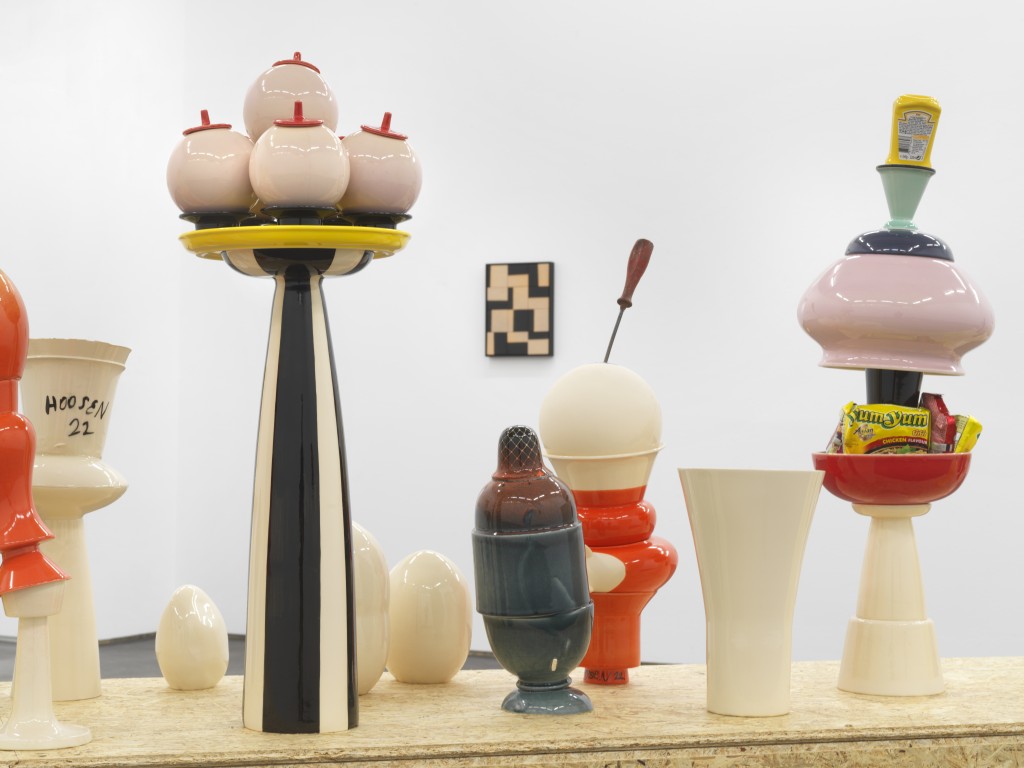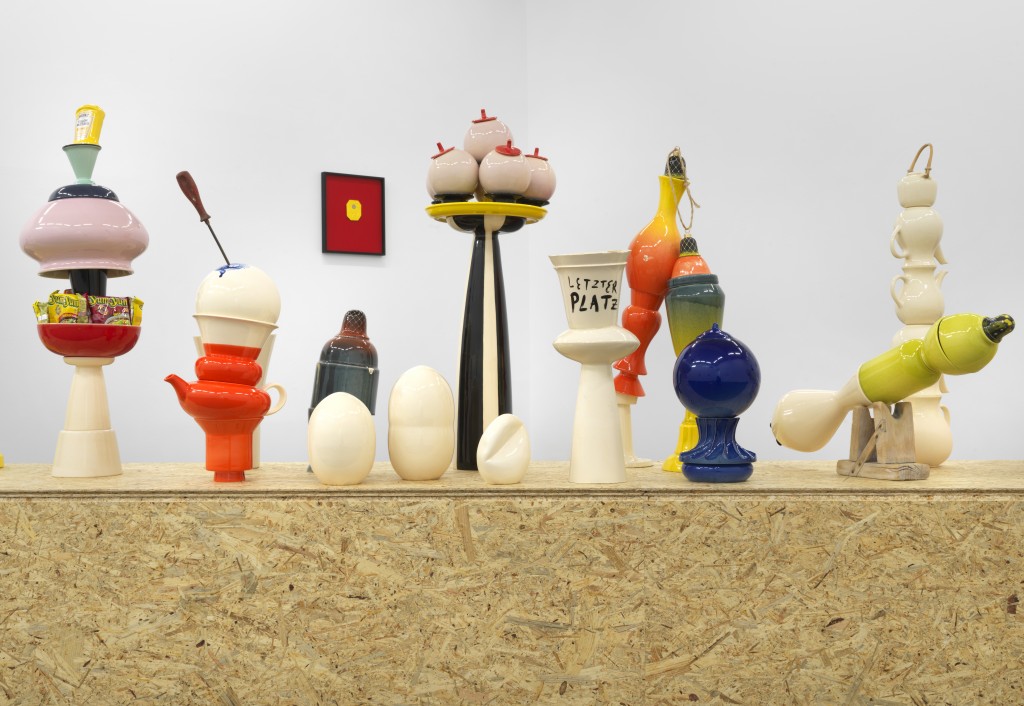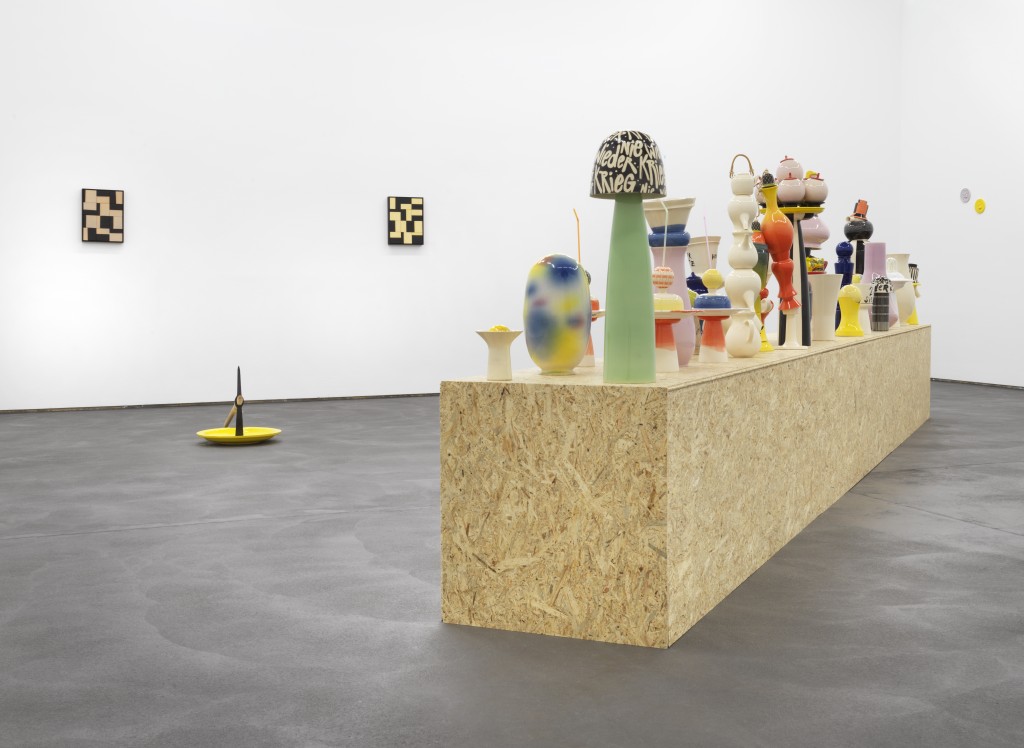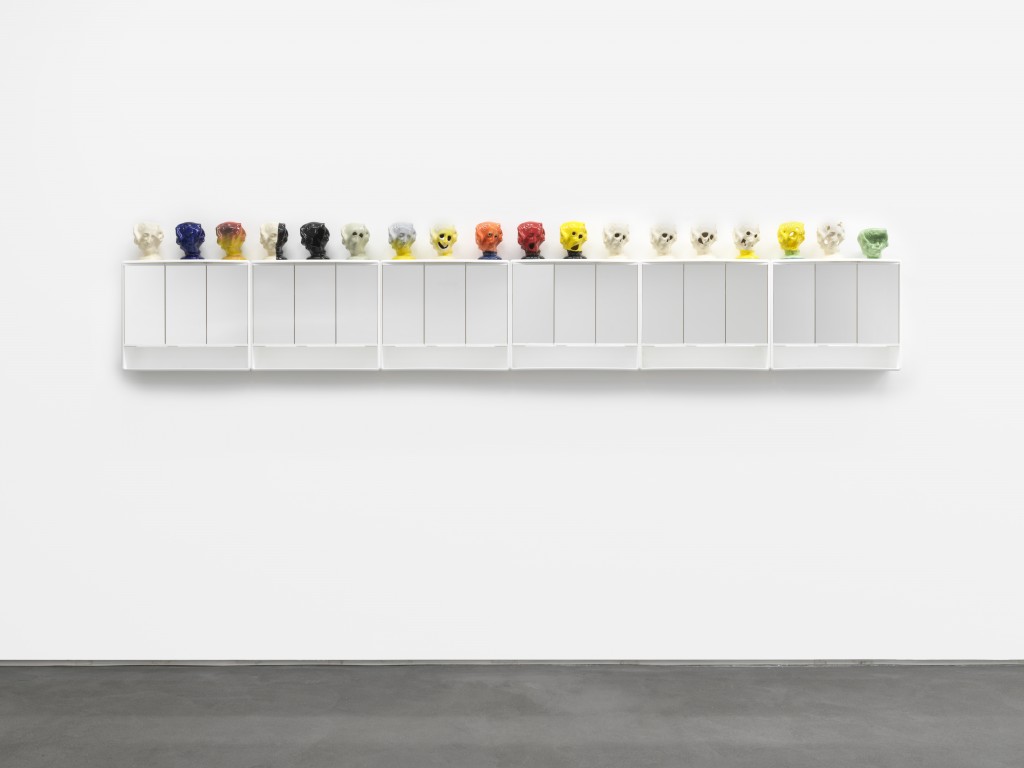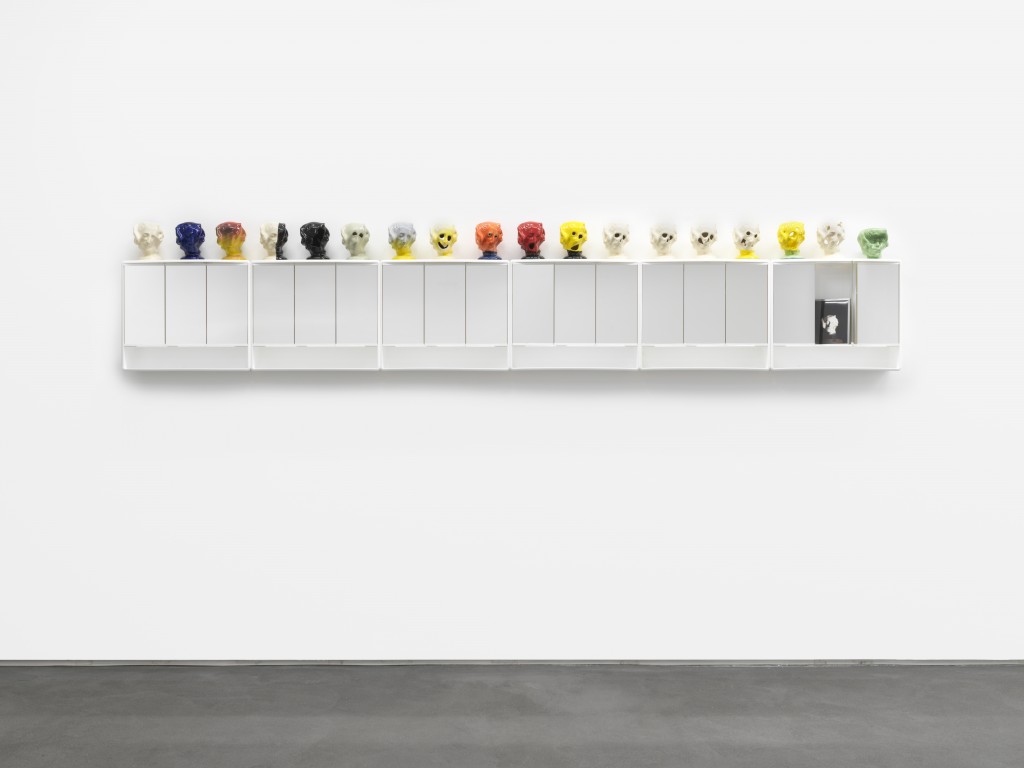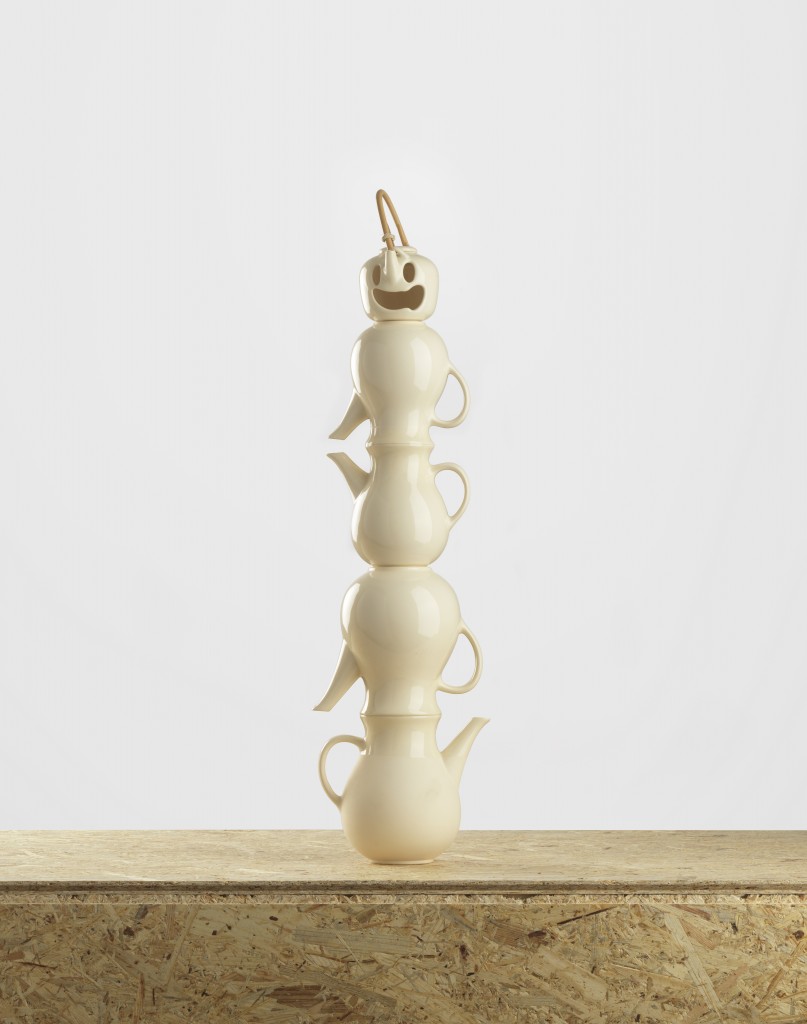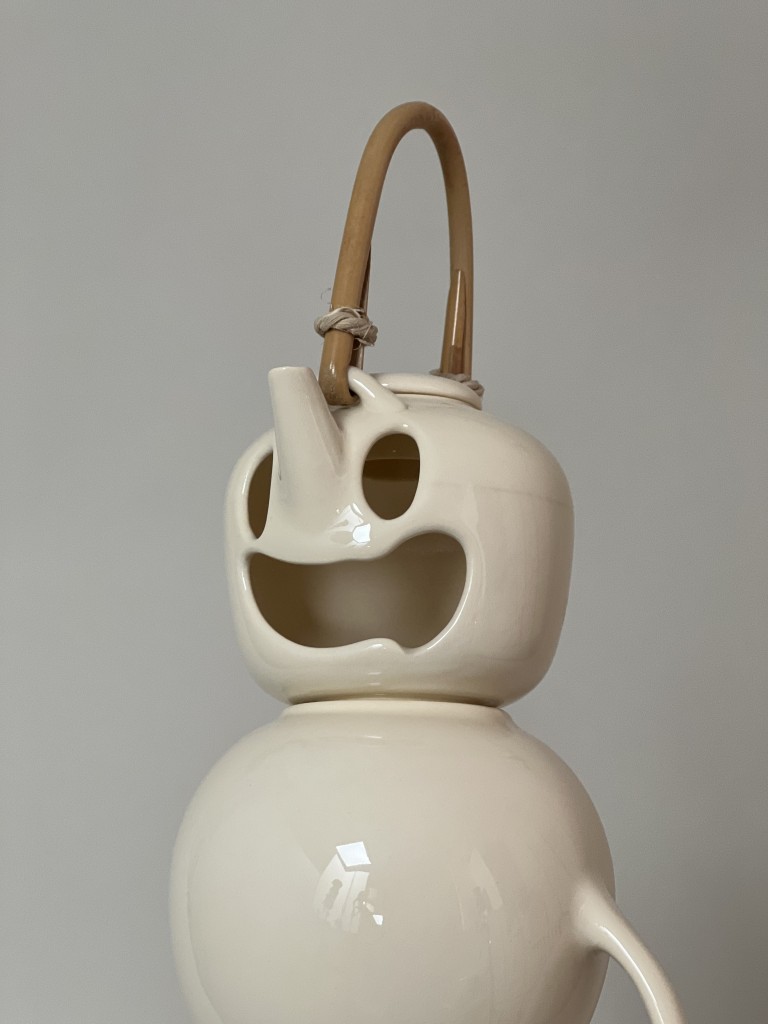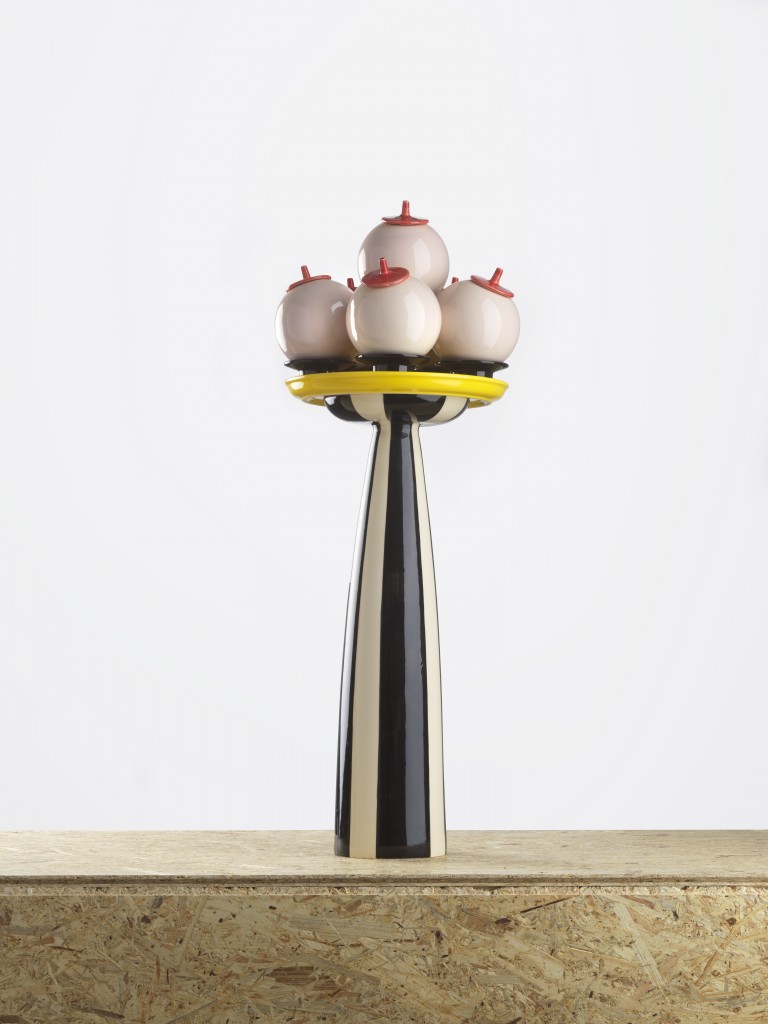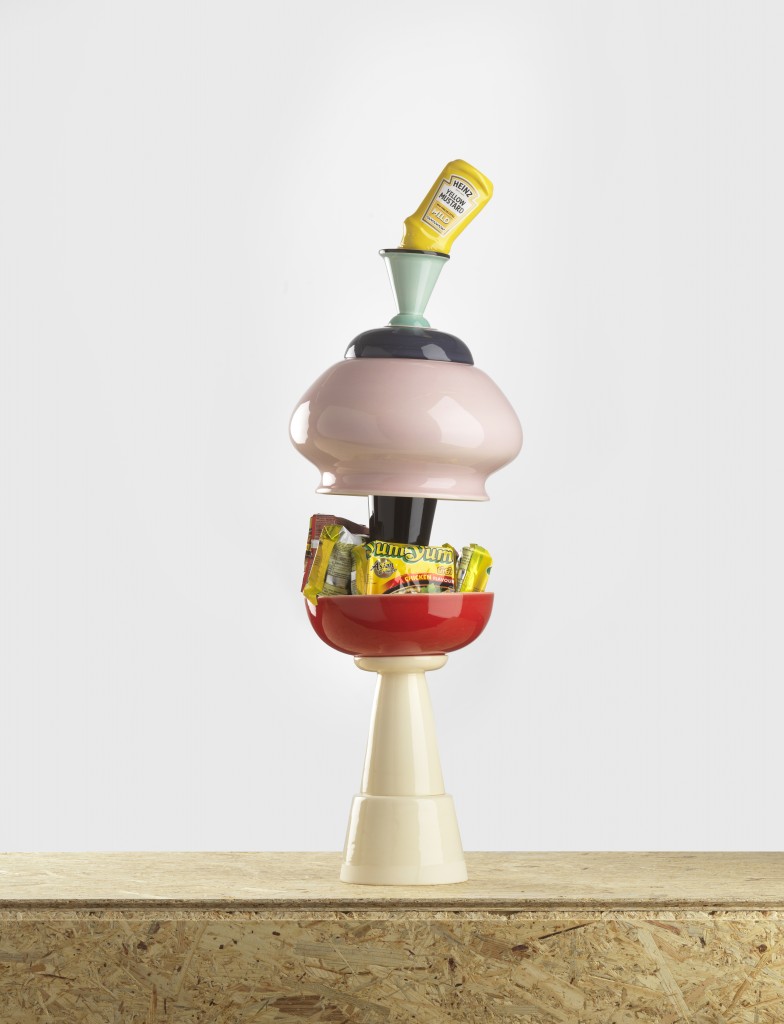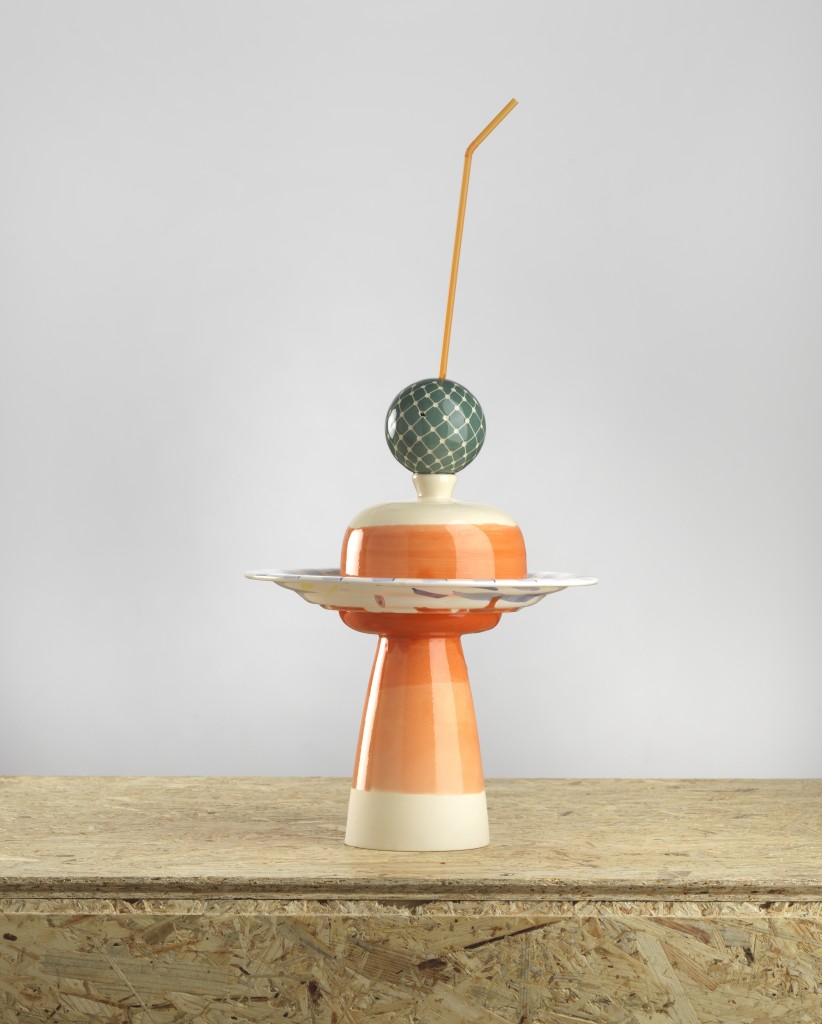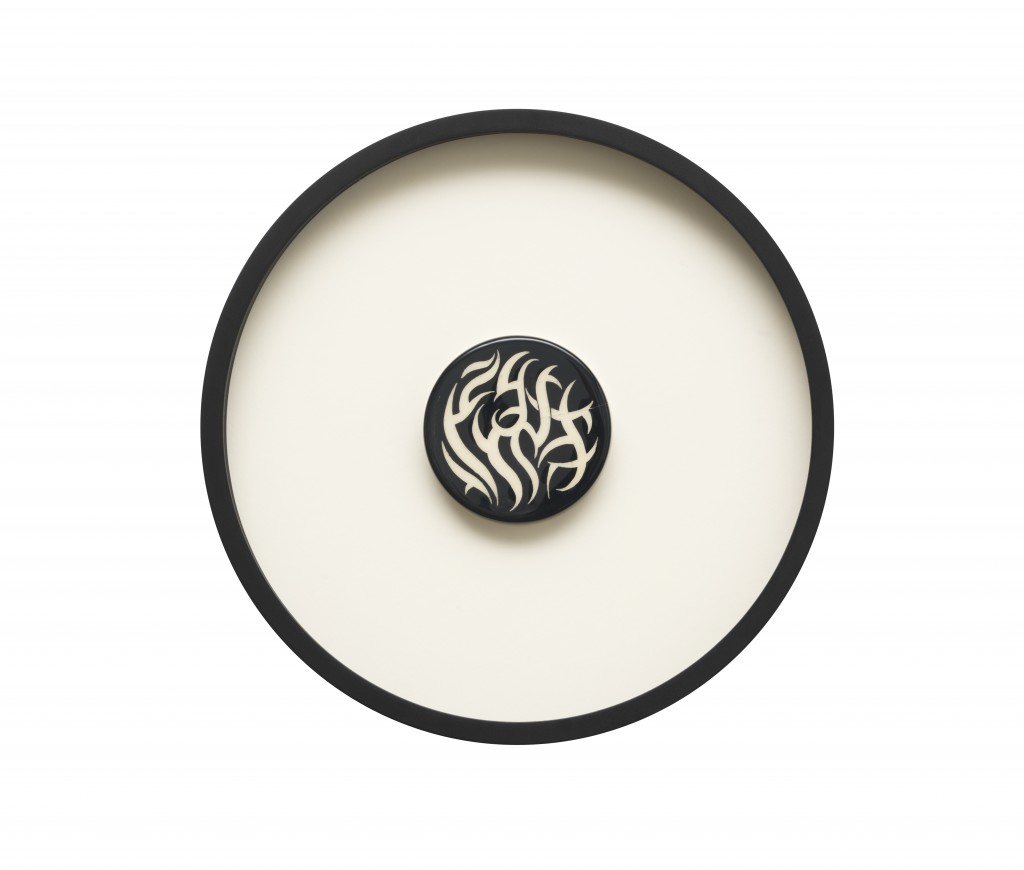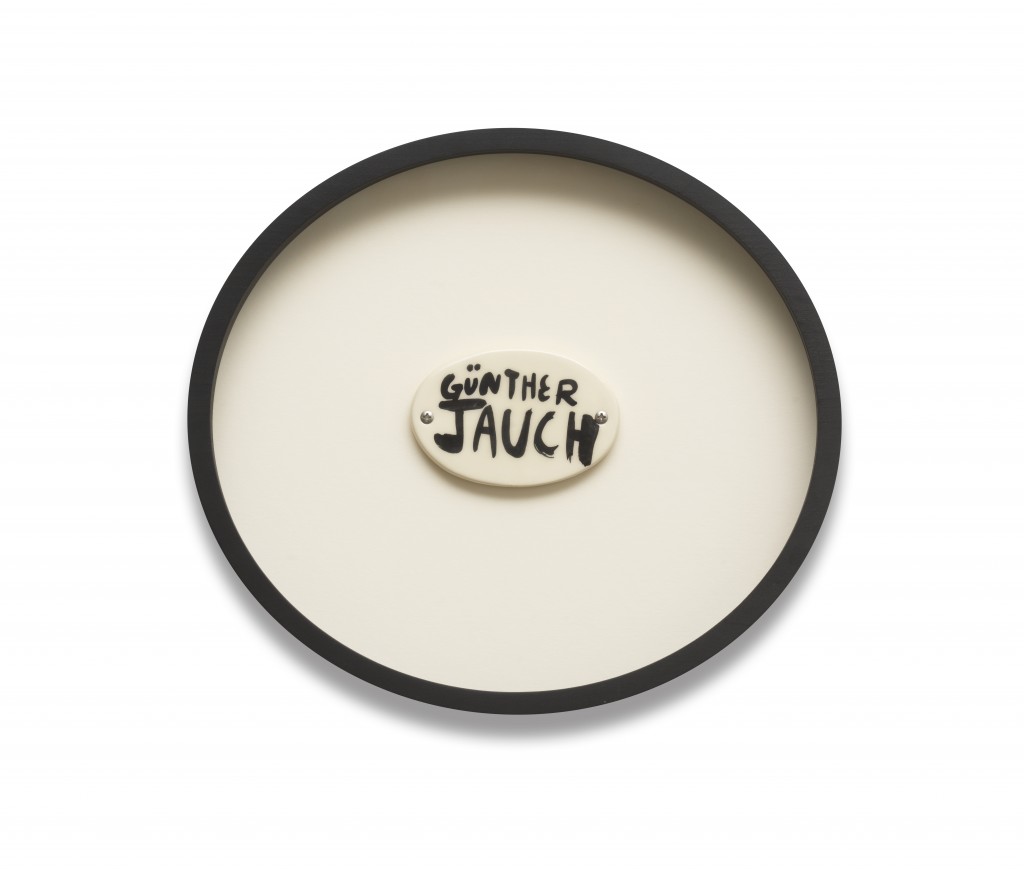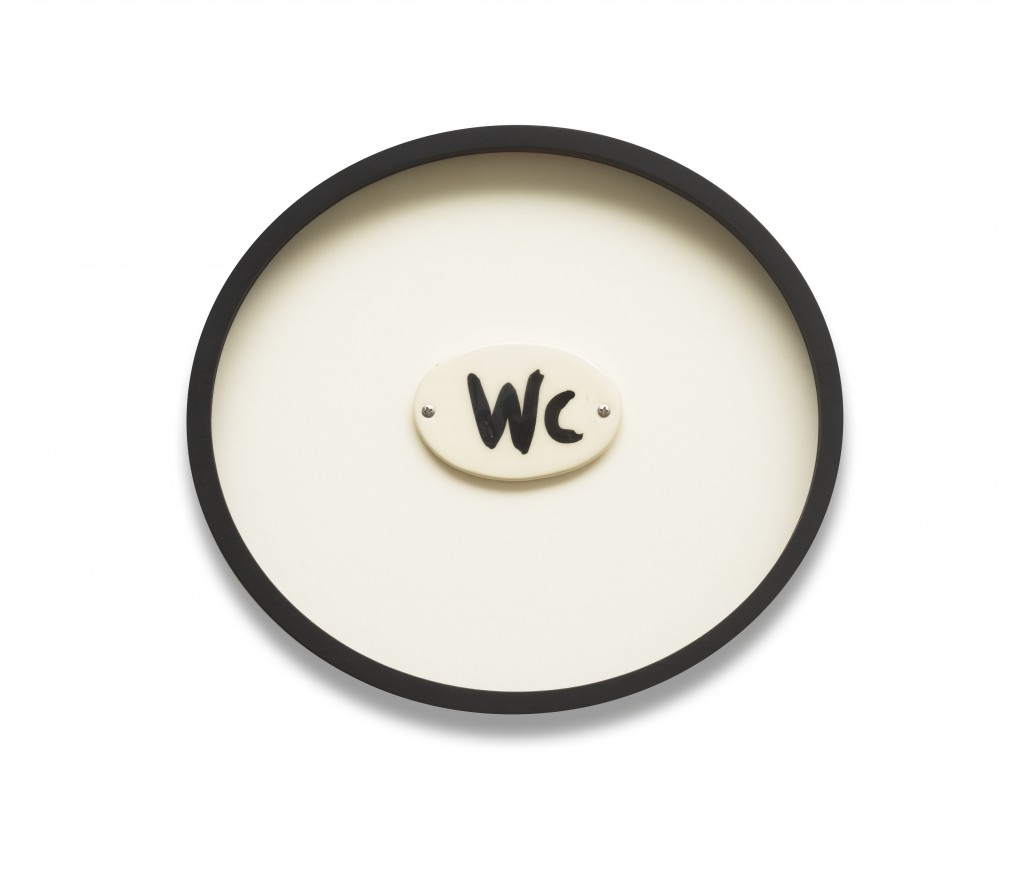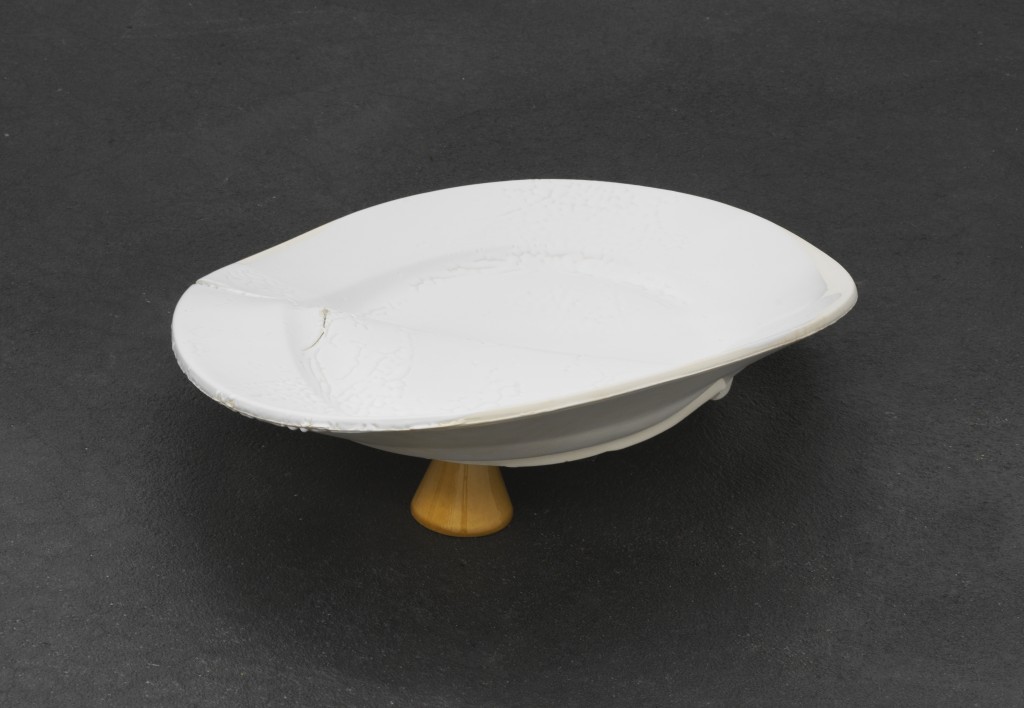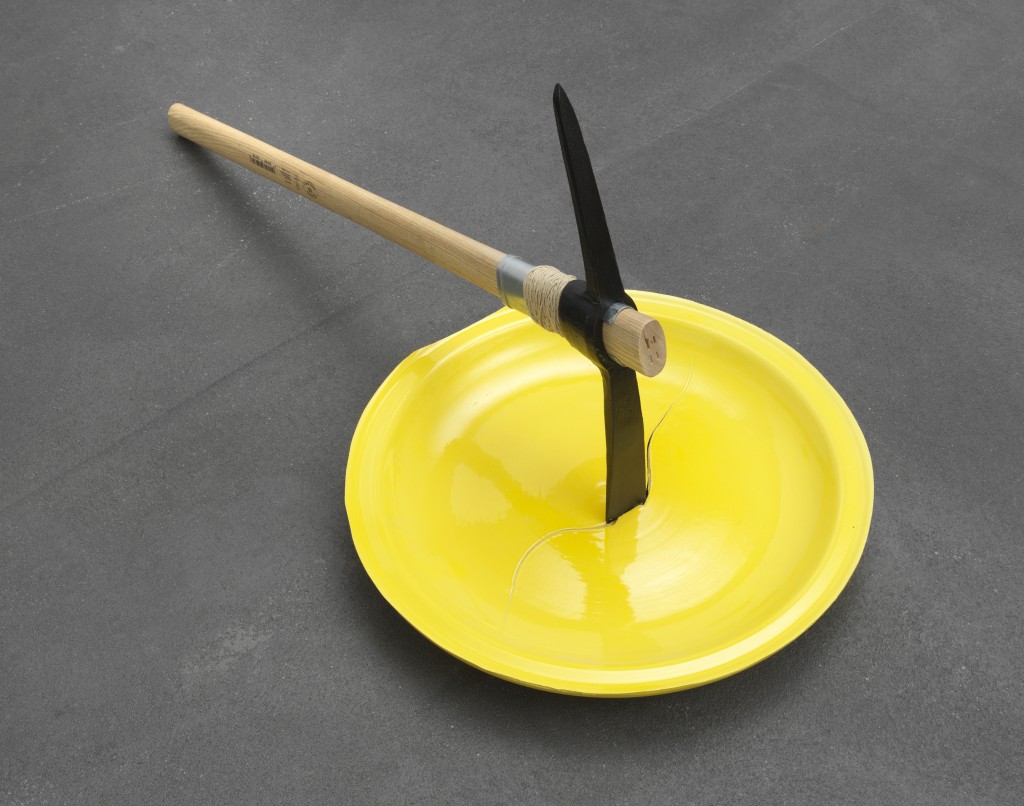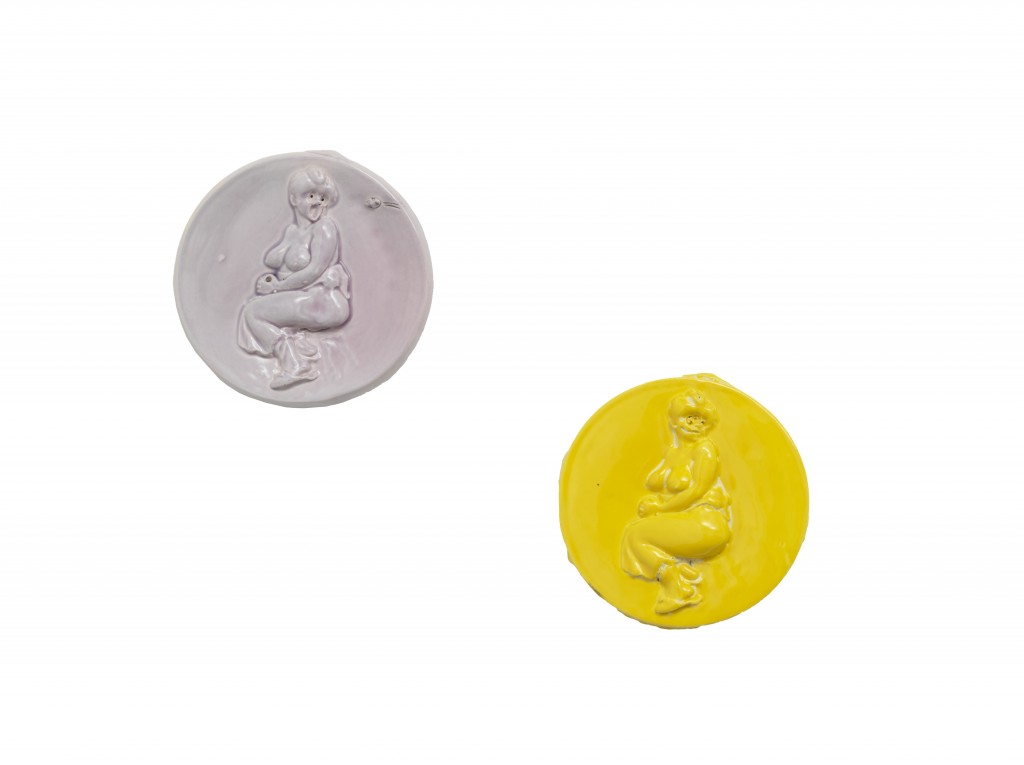DITTRICH & SCHLECHTRIEM is pleased to present B-WARE, a show of ceramics by CHRISTIAN HOOSEN, opening on MARCH 18 and on view through APRIL 16. On display on palettes, pedestals, shelves, and wall frames are various ceramic artworks produced at HB-Werkstätten für Keramik in Marwitz, Brandenburg, Germany. The cups, busts, vessels, and assemblages in the exhibition engage with systems of value and evaluation in art and society. The title itself, B-Ware (German for second-rate), critiques industrial production and economic and social systems, as well as Hoosen’s self-perception as an artist and misfit.
The art world looks down on craftsmanship because it ranks idea above execution and attributed above material value, but the fact is, as an artist you’re not exactly held in high regard by craftsmen and people in the manufacturing sector. Anyone can call themselves an “artist,” after all, but to be a ceramicist you have to have completed professional training. Hoosen, for one, had to become a craftsman at the HB-Werkstätten before he could garner esteem as an artist: he had to observe processes, learn techniques, and above all prove that he respected the craftsmen’s work so he wouldn’t seem disrespectful when he turned it into art. The fact, by the way, that uses not masterpieces but rejects for his art doesn’t make it any better. On the contrary, the existence of rejects is merely proof of how high the quality standards are (the supposed flaws in some of the discarded vases, plates, or watering pots are completely invisible to the layperson’s eye)—they’re not waste but evidence of value.
No wonder, then, that the art produced in this context is largely preoccupied with the upward and downward revaluation of evaluative criteria. It’s not like Hoosen hadn’t grappled with these questions before—you might in fact say that his entire oeuvre revolves around them—but not always so explicitly, and that may also have something to do with the material itself. For the longest time, ceramics was assigned to the artisan craftwork sector, to the DIY corner, and although high art has shown a growing fondness for ceramics in recent years, when it’s featured on the grand stage the works are often fairly unambitious on the levels of both idea and execution, making the medium an ambivalent choice for artists who want to make good art, art that’s unequivocally recognizable as such. Then again, what is that, “good” art? How much art passes as “good” in the art world even though it’s second-rate at best—in a word, “B-Ware”?
The above is a press brief from Annika von Taube. Her full exhibition essay is to be featured on our website and available at the gallery.
Please visit our website and social media accounts for additional updates, content, and news. For further information on the artist and the works or to request images, please contact Nils Petersen, nils(at)dittrich-schlechtriem.com.
DITTRICH & SCHLECHTRIEM freuen sich, eine Ausstellung mit Keramiken von CHRISTIAN HOOSEN unter dem Titel B-WARE vorzustellen, die vom 18. MÄRZ bis zum 16. APRIL gezeigt wird. Auf Paletten, Sockeln, Regalen und in Wandrahmen sind diverse Keramikarbeiten angeordnet, die in den HB-Werkstätten in Marwitz (Brandenburg) entstanden. Die Pokale, Büsten, Gefäße und Assemblagen in der Schau setzen sich mit Systemen von Wert und Bewertung in Kunst und Gesellschaft auseinander. Der Titel B-Ware verweist kritisch auf industrielle Produktion und wirtschaftliche und gesellschaftliche Zusammenhänge wie auch auf Hoosens Selbstbild als Künstler und Misfit.
Die Kunst fühlt sich dem Handwerk überlegen, weil sie die Idee über die Ausführung und den attribuierten Wert über den materiellen stellt, aber Fakt ist, als Künstler ist man nicht gerade hoch angesehen in Handwerk und produzierendem Gewerbe. „Künstler“ nennen kann sich schließlich jeder, aber Keramiker ist man nur nach entsprechender Ausbildung. In den HB-Werkstätten jedenfalls musste Hoosen erst zum Handwerker werden, um in der Folge auch als Künstler geschätzt zu werden: Arbeitsprozesse beobachten, Techniken erlernen und vor allem beweisen, dass er Respekt hat für die Arbeit der Handwerker, um nicht respektlos zu erscheinen, wenn er daraus Kunst macht. Dass er für diese Kunst keine Meisterstücke, sondern Ausschussware verwendet, macht die Sache übrigens nicht einfacher. Im Gegenteil, das Vorhandensein von Ausschuss beweist nur, wie hoch die Qualitätsstandards sind (manchen der aussortierten Vasen, Teller oder Gießkannen sieht man als Laie überhaupt nicht an, was mit ihnen nicht stimmen soll), er ist also kein Abfall, sondern Ausweis von Wertigkeit.
Kein Wunder, dass sich die in diesem Umfeld entstehende Kunst größtenteils mit der Auf- und Abwertung von Bewertungskriterien beschäftigt. Nicht, dass Hoosen sich nicht schon vorher damit auseinandergesetzt hätte, tatsächlich könnte man sagen, dass sich sein ganzes Schaffen um nichts anderes dreht, aber nicht immer so explizit wie hier, und das hat möglicherweise auch etwas mit dem Werkstoff selbst zu tun. Lange in der Bastelecke des Kunsthandwerks verortet, erlebt Keramik zwar seit einigen Jahren eine wachsende Zuneigung von Seiten der Hochkunst, manifestiert sich dort allerdings häufig auf eine Weise, die weder in der Idee noch in der Ausführung große Ambitionen zeigt, was sie zu einem ambivalenten Medium für Künstler macht, die gute und eindeutig als solche identifizierbare Kunst abliefern wollen. Aber was ist das schon, „gute“ Kunst? Beziehungsweise, wieviel Kunst geht im Kunstbetrieb unter „gut“ durch, obwohl sie höchstens zweitklassig ist, „B-Ware“ eben?
Annika von Taube, von der diese Pressevorschau stammt, wird einen Essay zur Ausstellung verfassen, der auf unserer Webseite erscheinen und in der Galerie ausliegen wird.
Bitte besuchen Sie unsere Webseite und folgen Sie uns in den sozialen Medien, um über das Galerieprogramm und aktuelle Inhalte auf dem Laufenden zu bleiben. Für weitere Informationen zum Künstler und den Werken oder um Bildmaterial anzufordern, wenden Sie sich bitte an Nils Petersen, nils(at)dittrich-schlechtriem.com.
